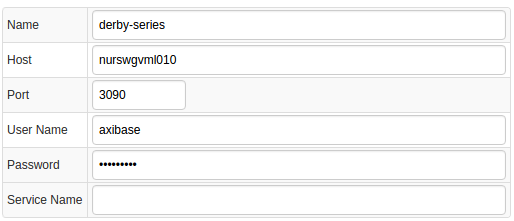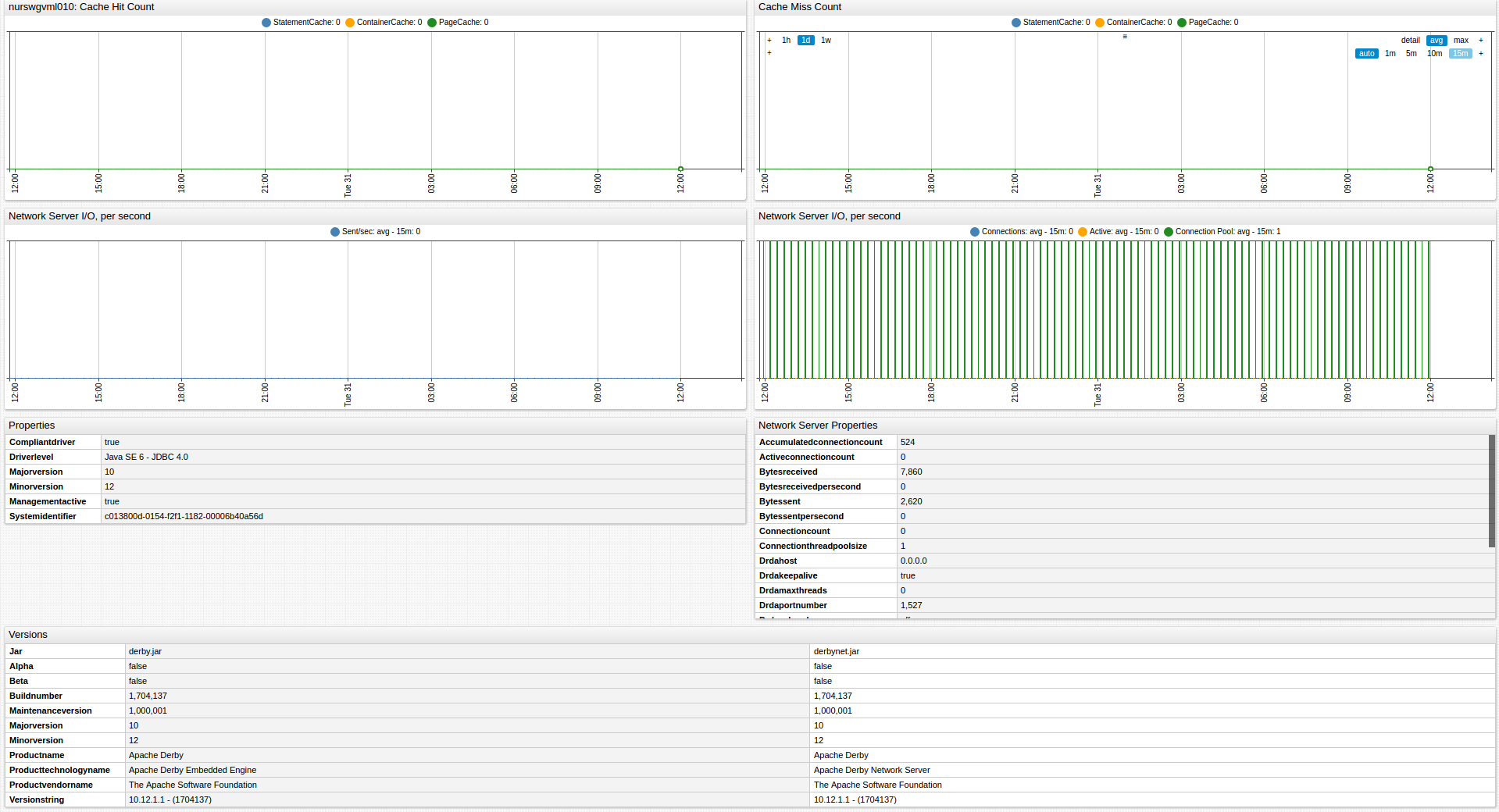Derby Database
Overview
This document describes how to collect JMX metrics exposed by the Apache Derby Database for long-term retention and monitoring in the Axibase Time Series Database.
Requirements
- Derby database
9+
Installation Steps
Enable JMX in Java application
Configure your Java applications for JMX monitoring as described here.
Import Derby Job into Axibase Collector
- Open Jobs:Import and upload the derby-job.xml file.
Configure Derby JMX Connection
- Open the Jobs:JMX page and select the
jmx-derbyjob. - For each JMX Configuration:
- Provide connection parameters to the target Derby:

- Click the [Test] button and confirm the result:

Schedule the Job
- Open the
JMX Jobpage and click the [Run] button for the Derby JMX job. - Make sure that the job status is
COMPLETEDandItems ReadandSent commandsare greater than 0.

- If there are no errors, set job status to 'Enabled' and save the job.
Verify Metrics in ATSD
- Login into ATSD.
- Click on Metrics tab and filter metrics by name
jmx.derby*.

Viewing Data in ATSD
Metrics
- List of collected Derby metrics
Properties
- List of collected Derby properties
Entity group
- Open Admin:Entity Groups, click the [Import] button, and upload derby_entity_group.xml.
- Select the imported
apache-derby-databasesgroup. - Verify that the group contains your Derby hosts.
Entity Views
- Open Configuration:Entity Views, click the [Import] button, and upload derby_entity_view.xml
- Select the imported
Apache Derby Databasesview. - Select the Entity Group that you created earlier.
- Click on [View] button and browse information about your entities:

Portal
- Open Configuration: Portals, click the [Import] button, and upload derby_portal.xml.
- Click the Assign link and associate the portal with the entity group you created earlier.
- Open Entity tabs, find the java application by name, and click on it's portal icon.

